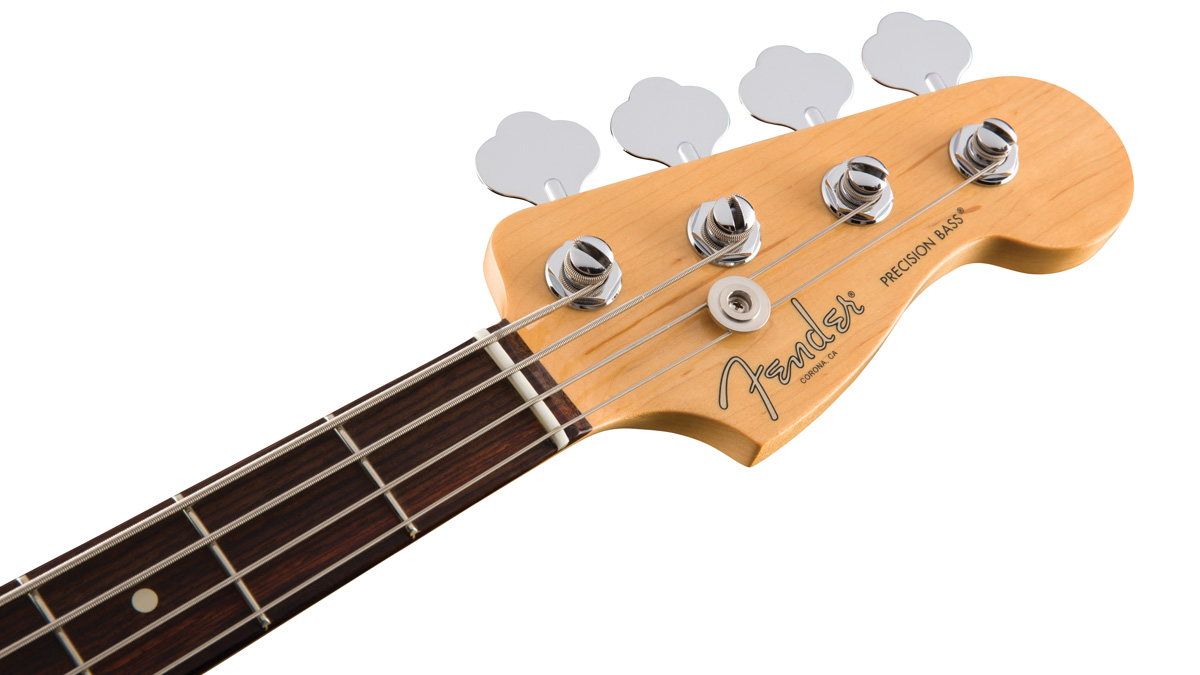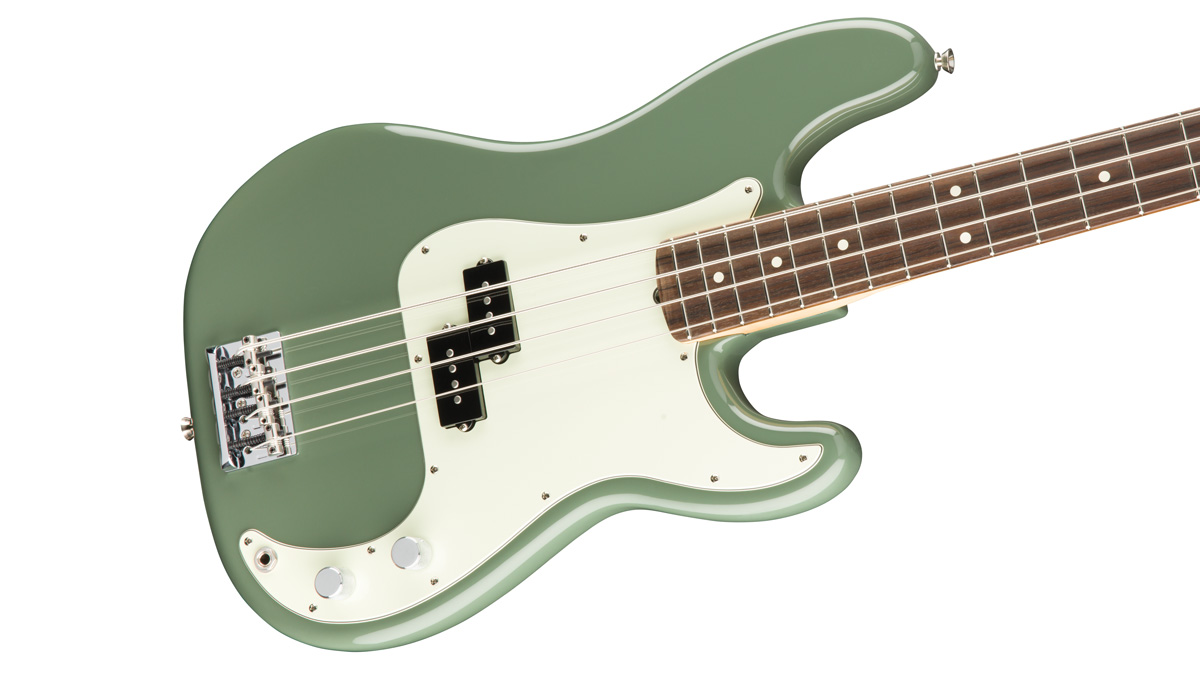MusicRadar Verdict
Subtle improvements keep the Fender Precision as relevant as ever.
Pros
- +
New pickup and hardware tweaks are a small but significant improvement.
Cons
- -
Getting a little expensive for an everyman bass.
MusicRadar's got your back
The mighty Fender Precision is and always has been the rock’n’roll bass guitar.
With a mighty history and tradition to consider, revising the venerable Precision - no matter how slightly - must keep Fender’s designers and shareholders awake at night. Let’s take a look at the new American Professional P-Bass and see how it performs.
Build
US-made Fender basses are now built better than at any other time in their history. The modern production plant in Corona, California is automated and state-of-the-art; nothing leaves without being checked and re-checked.
Although this means that every Precision bass that leaves the factory is in effect a clone of its siblings, the simple fact is that they’re all of super-high quality. This one certainly is. The neck join is tight and accurate and the finish is flawless, both on the body and the neck.
We looked as hard as we could for any imperfection on this bass, and we just couldn’t find anything at all. Even after being shipped to me, the neck was true and the action was spot-on. It was even in tune.

The three-ply ‘mint green’ scratchplate works particularly well against the new ‘Antique Olive’ finish of the review bass. The colour might not suit everyone, unless they’re bulk-buying for the military, but we like it and it certainly makes a change from the Black, White or Sunburst colours we’ve grown used to. Candy Apple Red and Natural finishes are also available.
The hardware is as functional and as high quality as ever. New tuners have tapered (or ‘fluted’) shafts that apparently help guide the string windings downward to enhance the break angle over the nut.
We don’t think many people had a problem with the previous design, but they work smoothly and look great. A more tangible improvement is the new(ish) Hi-Mass bridge: this not only adds a degree of clarity and sustain, but also makes it much more comfortable to dampen or mute strings with your palm. Other improvements include new ‘narrow-tall’ frets, a bone nut and a new, Michael Bump-designed pickup - talking of which...
Sounds
The new pickup design features a different type of alnico for each of the treble and bass sides of the coil. If this makes a difference, it’s pretty subtle, but the important thing is that the Precision’s distinctively rich, woody tone is preserved: the new AP Precision sounds exactly as a P-Bass should.
As soon as you plug in and play, you get that authentic, familiar rock’n’roll tone that has been the foundation of countless hit records. There does seem to be an extra degree of refinement, perhaps even enhancement to the sound. It sounds like a Fender Precision - but maybe even a little more so.
If you’ve never been a regular Precision player, the simple passive tone control and single humbucker pickup can be a liberating revelation, with no obsessing over on-board multi-band EQs or pickup selector switches.
Simply max out the volume and adjust the tone control until your bass sounds good. From fully on, the tone can be gradually backed off to remove any harshness and soften the sound in a consistent and controlled way, giving you a wide palette of sounds.
It’s fairly subtle, but the AP series Precision is a slight improvement over its predecessor in nearly every measurable way
These range from a warm, loved-up mellow thud to an aggressive snarling clang – the classic Precision sound.
Not only is the alder body resonant, it’s also light: the new bass balances perfectly. The classic body shape has been a benchmark since 1957 when it was first refined from the original slab-bodied Precisions of the early 50s. Any Precision is comfortable to play, but the new Fender P feels better than ever, particularly the neck, which is an accurate copy of an original from ’63.
It’s subjective of course, but for most players - and certainly for us - the slim C profile of those early-60s Precision necks mark the pinnacle of playability, and the smooth satin finish of the AP only enhances it. The new narrow-tall frets are perfectly led and polished to the rolled fingerboard edges too, making the whole thing feel fast and easy to play.
The new Fender AP Precision is hardly a complicated thing - it’s just fundamentally ‘right’. This is partly down to the quality of materials, and partly down to how it’s made, but mostly it’s down to the genius of Leo Fender’s original design.
It’s fairly subtle, but the AP series Precision is a slight improvement over its predecessor in nearly every measurable way. Keeping loyal customers happy while continually improving must be a tricky balance to pull off, but Fender regularly seems to achieve just that - and here’s the proof. It’s this reviewer’s new favourite bass.
“Chinese Democracy was a boring record. But calling it Guns N' Roses was not honest. It was totally a solo record”: GN’R’s ex manager takes aim at Axl Rose
“Instead of labouring over a perfect recreation, we decided to make an expanded counterpart”: Chase Bliss teams up with Mike Piera for Analog Man collab based on the legendary King Of Tone
“It’s about delivering the most in-demand mods straight from the factory”: Fender hot-rods itself as the Player II Modified Series rolls out the upgrades – and it got IDLES to demo them










